Hindu Festivals Vat Savitri Vrat
Vat Savitri Vrat
Vat Savitri Vrat is a sacred Hindu observance performed by married women, especially in North India, Maharashtra, and Bihar. On this day, women fast and pray for the long life, health, and prosperity of their husbands. They worship the Vat (banyan) tree, which symbolizes longevity, by tying threads around it and offering prayers. The vrat is inspired by the legendary devotion of Savitri, who brought back her husband Satyavan’s life through her faith and determination.
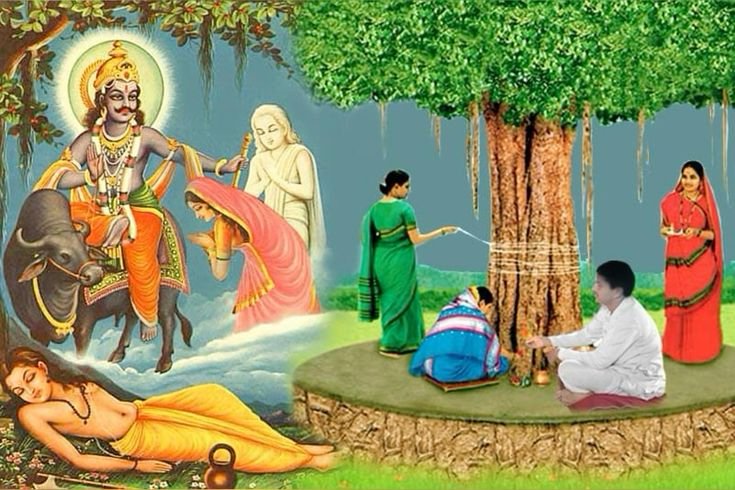

Vat Savitri Vrat is a fasting ritual observed by married women for their husbands’ long life, inspired by Savitri’s devotion to Satyavan.

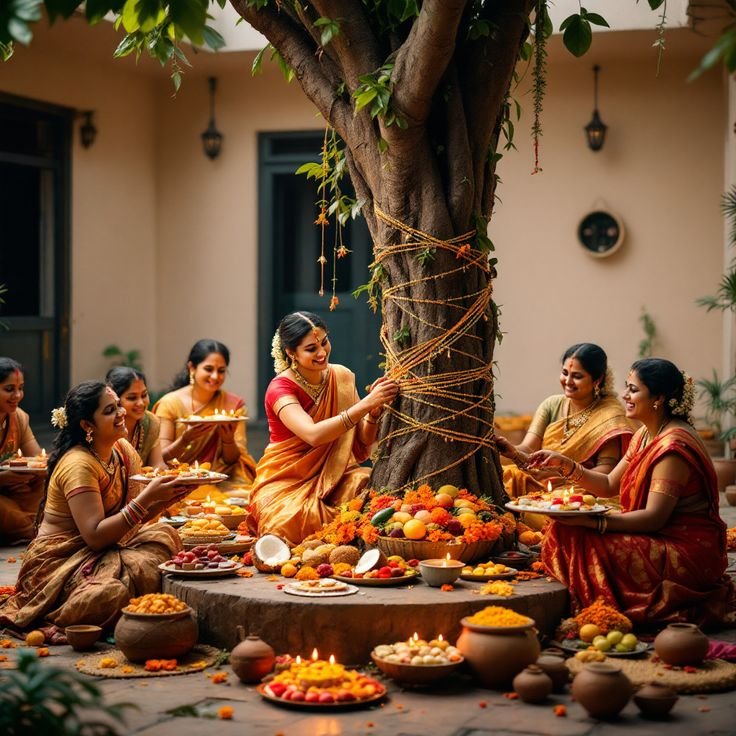

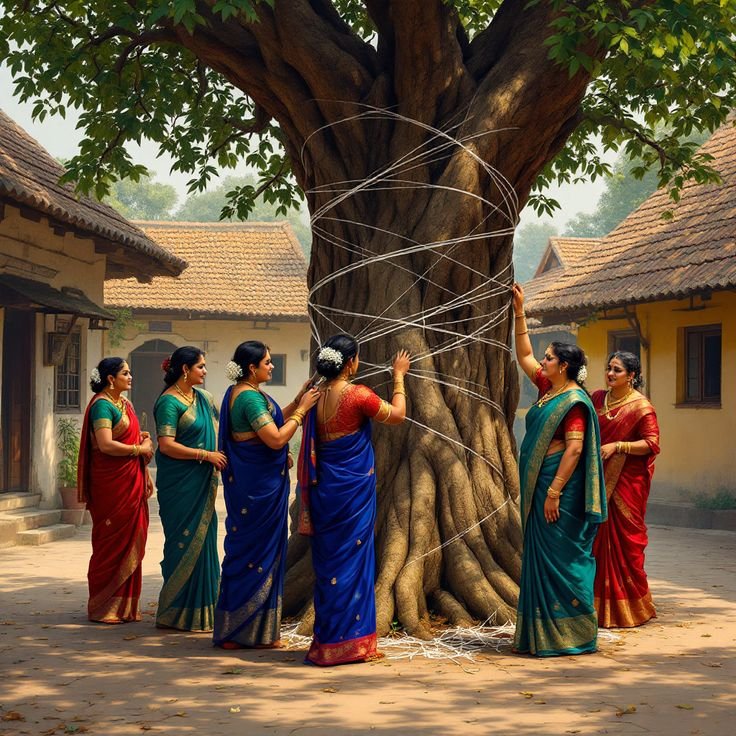


Rituals & Traditions of Vat Savitri Vrat
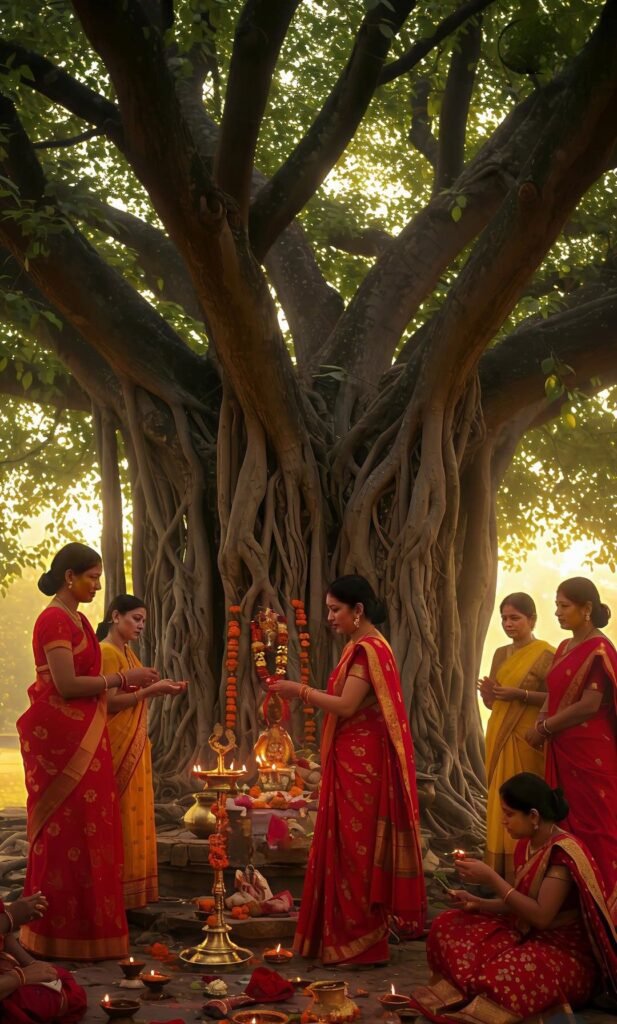
at Savitri Vrat is a sacred festival observed by married Hindu women, especially in states like Bihar, Uttar Pradesh, Odisha, and Maharashtra. It is celebrated on the full moon day (Purnima) of the Jyeshtha month, usually in May or June. The vrat is dedicated to seeking the long life, prosperity, and well-being of their husbands, making it a symbol of devotion and marital harmony.
The main ritual centers around worshipping the Vat (banyan) tree, which represents longevity and strength. Women wake up early, bathe, dress in traditional attire—often red or yellow sarees—and adorn themselves with bridal symbols like bangles, bindis, and sindoor. They observe a fast and gather around banyan trees, offering water, fruits, flowers, and sacred threads. By tying the threads around the tree and performing circumambulations, they pray for their husband’s health and happiness.
The significance of the vrat comes from the legend of Savitri and Satyavan. When Satyavan’s life ended, Savitri followed Yama, the God of Death, and through her wisdom and unwavering devotion, she persuaded him to restore her husband’s life. This tale of courage and loyalty is at the heart of Vat Savitri Vrat.
The festival not only emphasizes a wife’s love and sacrifice but also symbolizes strength, faith, and the eternal bond of marriage.
Spiritual Importance & Cultural Significance
Vat Savitri Vrat is a sacred Hindu observance performed by married women across states like Bihar, Uttar Pradesh, Odisha, and Maharashtra, dedicated to praying for the long life, prosperity, and well-being of their husbands, and it falls on the full moon day (Purnima) of the Jyeshtha month, usually in May or June. The vrat derives its name from the Vat or banyan tree, which symbolizes longevity, strength, and resilience, and women worship it with great devotion. On this day, devotees wake up early, bathe, and wear traditional attire, usually red or yellow sarees, symbolizing marital bliss, while adorning themselves with bridal ornaments such as bangles, bindis, and sindoor. They observe a fast, and in groups or individually, gather near banyan trees to offer prayers by presenting flowers, fruits, water, and sacred threads. Circumambulating the tree while tying threads around it is an essential ritual, as it represents the bond of marriage and the wish for a long, healthy life for their husbands. The festival’s roots lie in the legend of Savitri and Satyavan, where Savitri’s unshakable determination and wisdom compelled Yama, the God of Death, to return her husband’s life, making her a timeless symbol of devotion and courage. Through this vrat, women not only seek blessings for their husbands but also emulate Savitri’s virtues of loyalty, sacrifice, and perseverance. Even in modern times, Vat Savitri Vrat remains a powerful expression of faith, love, and cultural tradition, highlighting the sanctity of marriage and the spiritual strength of women.
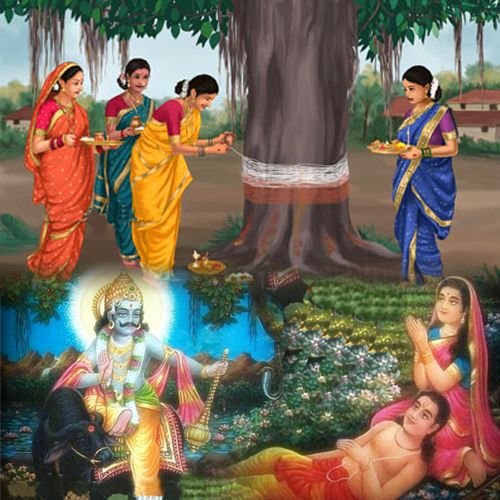

Food & Sweets & Modern Celebrations
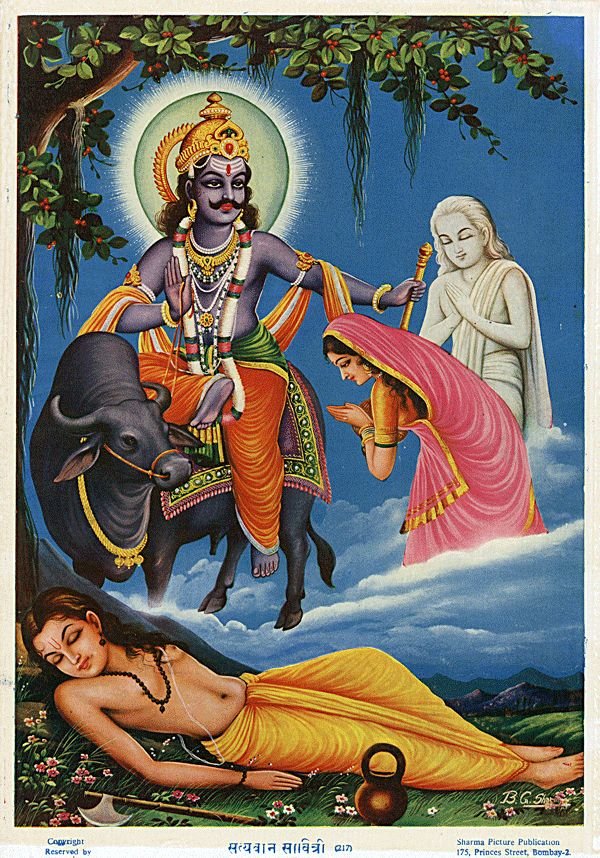
Vat Savitri Vrat is a revered Hindu festival observed with great devotion by married women, particularly in states like Bihar, Uttar Pradesh, Odisha, and Maharashtra, and it is dedicated to praying for the long life, prosperity, and good health of their husbands. Celebrated on the full moon day (Purnima) of the Jyeshtha month, usually in May or June, the vrat takes its name from the Vat or banyan tree, which symbolizes strength, resilience, and longevity. On this auspicious day, women wake up early, take purifying baths, and dress in traditional attire, often in bright red or yellow sarees, adorned with bridal ornaments such as bangles, bindis, and sindoor, signifying marital bliss. They observe strict fasts throughout the day and gather around banyan trees, where they offer prayers with flowers, fruits, water, and sacred threads. A key ritual involves tying threads around the trunk of the banyan tree and circumambulating it while chanting prayers, symbolizing their devotion and wish for their husbands’ well-being. The spiritual significance of this vrat is rooted in the legendary tale of Savitri and Satyavan, in which Savitri, through her unwavering faith, intelligence, and courage, followed Yama, the God of Death, and persuaded him to restore her husband’s life. This powerful story has made Savitri an epitome of marital devotion and strength, inspiring women for centuries. The festival, therefore, not only highlights the virtues of loyalty, sacrifice, and determination but also reinforces the sanctity of marriage. Even today, Vat Savitri Vrat continues to be observed with sincerity and faith, blending traditional rituals with modern expressions of devotion, making it a timeless celebration of love, strength, and the enduring bond between husband and wife.




















































